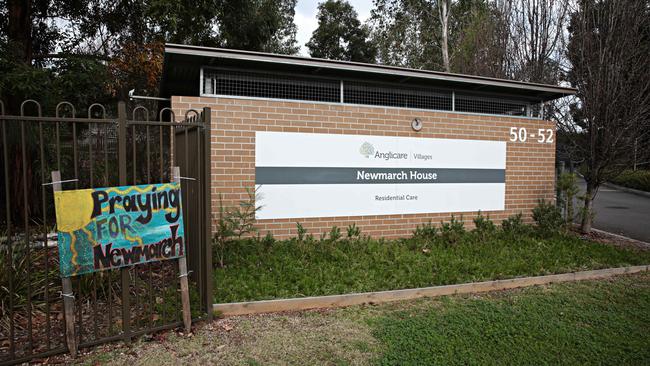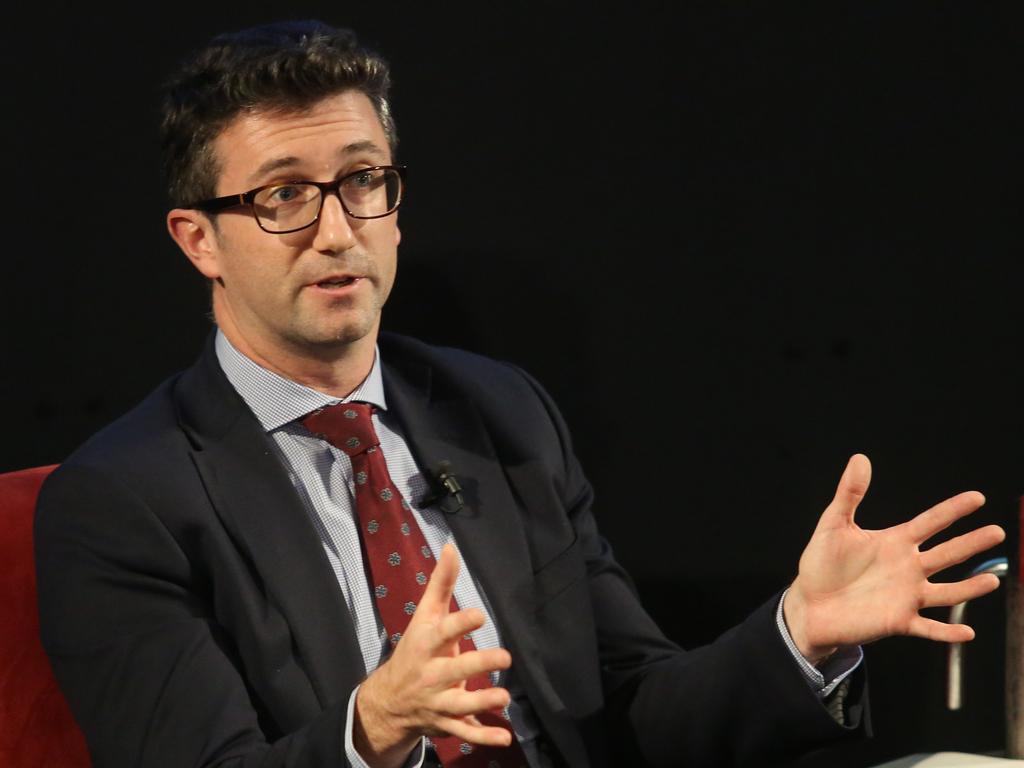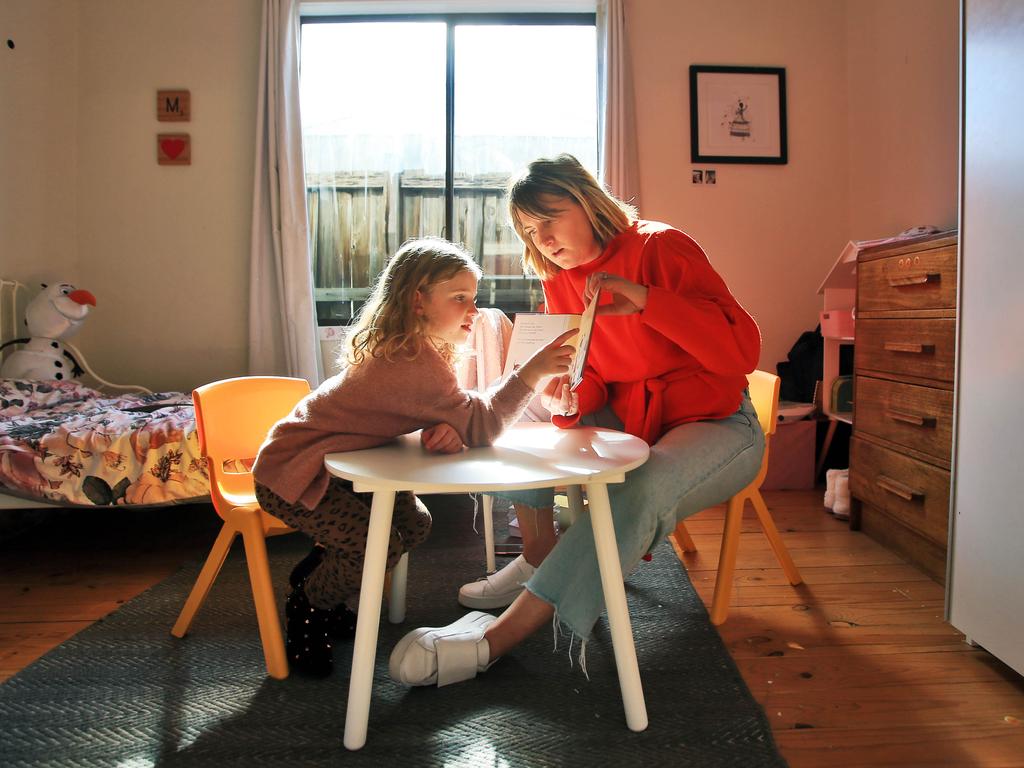
The nation is doing well, with much lower numbers than Europe and the US. Yet in the past month, the death toll has more than trebled due largely to infections in Victorian aged-care homes.
The federal government claims the aim of its $300bn spend on various employment guarantees has been to protect young workers who have largely had to bear the financial brunt of saving the elderly. But in fact, the elderly are not being saved.
We learned last Thursday of a previously confidential paper given to the federal government in April but kept secret until it was sent to the Aged Care Royal Commission. The review by Lyn Gilbert, head of infection control for Western Sydney, looked into the first outbreak in aged care in March at Sydney’s Dorothy Henderson Lodge where six residents died of COVID-19.
Professor Gilbert also prepared a separate as yet unreleased review into the later Newmarch House outbreak in western Sydney in April in which 17 people died.
Political correspondent David Crowe in The Sydney Morning Herald on Thursday quoted Professor Gilbert about the experience of dealing with coronavirus at Dorothy Henderson Lodge: “Maintaining adequate numbers of agency nurses was difficult and costly.” The virus entered the facility via an infected worker who had not been diagnosed.
Despite the lessons of those two Sydney outbreaks, COVID-19 has now spread to 120 facilities in Victoria. Like Sydney, the virus has been spread by aged-care workers, a highly casualised and poorly paid group often forced to work across multiple centres to make a living.
This raises a crucial question for Scott Morrison, and the various state and federal chief medical officers on the Australian Health Protection Principal Committee that advises national cabinet on medical strategies for the pandemic. Could Australia have spent much less money much more effectively and reduced its COVID-19 mortality rate by implementing measures to protect its aged-care workforce?
Given the statistics here and globally, it is clear COVID-19 is not particularly dangerous to the young. In a study of countries with high death numbers, 95 per cent of deaths in Italy were over 60. In Brazil, 85 per cent were over 60 and 82 per cent had pre-existing comorbidities. In the US, 46 per cent were aged between 65 and 84 and 34 per cent were over 85.
The ABC reported on April 24 that more than half of all COVID-19 deaths in Europe were in aged-care homes. Studies in the US suggest at least half of all its 176,000 deaths were in formal aged-care settings. The UK government says 20,000 people died in aged care in Britain. Canada, a federation like Australia with comparable institutional structures, says 82 per cent of its coronavirus deaths were in aged care.
So it’s not like the Morrison government, which regulates aged care nationally, did not have clear warnings from across the world and in Sydney that the greatest danger of COVID-19 was infection of the elderly in aged care. It’s hard to see how community-wide lockdowns with no specific extra precautions for workers in aged care could have appeared the right response to Victoria’s second wave.
The US Centres for Disease Control on June 25 warned of the dangers of formal aged care: “The communal nature of nursing homes and long-term care facilities, and the population they serve (generally older adults often with underlying medical conditions), put those living in nursing homes at increased risk of infection.” It specifically warned of the danger of healthcare workers in nursing homes spreading infection.
Many journalists on the Left seem unwilling to attribute blame for Melbourne’s problems. ABC radio host Rafael Epstein on Insiders on August 16 said journalists could either focus on the blame game, or on fixing the problem. Perhaps that will change now the royal commission has criticised the federal government’s lack of aged-care strategy, and journalists eager to protect Victorian Premier Daniel Andrews over hotel quarantine failures will be more curious about Morrison’s role.
Morrison is right when he says the problems in Victorian aged care arose because of community transmission following hotel quarantine failures. But the Prime Minister’s attack on SkyNews host Andrew Bolt a fortnight ago — over an apparent misreading of Bolt’s position on aged care — suggests Morrison is looking for cover for his government’s own failures.
As this column said last week, Bolt has been arguing since March that economic lockdowns were overdone and the real issue was protecting the elderly in aged care. On August 11, he attacked Morrison over a press conference earlier that day in which the PM appeared to suggest Bolt had written that the aged needed to be sacrificed for the economic good. He did not. He merely raised — and continues to raise — questions thrown up by statistics about the virus.
On August 19, 642 Australians were in hospital with COVID-19, with 52 in intensive care. But outside Victoria there were only 11 people with COVID-19 in hospital, eight of whom were in ICU. In other words, the disease is almost non-existent in serious form in most of the nation. Yet we have banned most interstate travel and virtually all international travel.
The total national death toll last Thursday was 463. Only a handful of total deaths were under 70, and the vast majority over 80.
Is an economic lockdown of Australia’s second most important state, with the second largest population and second largest city, really the right way to handle a virus that kills mainly the elderly, most in formal care? Could Australia have saved its economy and more lives by a harder lockdown of aged care, better monitoring of the aged-care workforce, subsidies to aged-care workers so they need only one job, and advice to the over-70s not to gather socially outside their homes? All the while maintaining national social distancing and hand hygiene policies, high testing rates and stringent quarantine policies?
It’s worth looking at other countries that have done better than Australia. Taiwan, with a similar population but much closer to China, is the best example. It established clear command and control protocols, rigid quarantine structures for returning travellers and used “geofencing” — telecommunications tracking to enforce stay-at-home rules for the sick and those in quarantine. Taiwan has had 485 cases of COVID-19 and just seven deaths. The virus did not get a foothold in aged care.






The media has finally started waking up to the biggest flaw in Australia’s response to COVID-19.